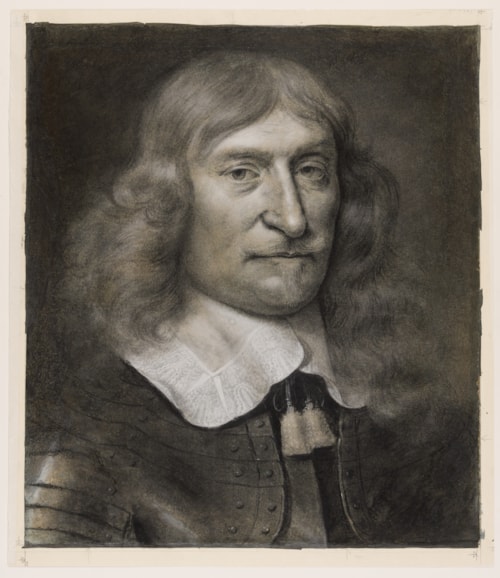
Wallerant VAILLANT
Lille 1623 - Amsterdam 1677
Biography
A painter, draughtsman and printmaker, Wallerant Vaillant was born in Lille, one of five brothers who all became artists. He is thought to have trained with Erasmus Quellinus the Younger in Antwerp, and in 1642 settled with his family in Amsterdam, where he established a reputation as a portrait draughtsman. Vaillant is perhaps best known today, however, for his mezzotint prints. He is thought to have learned the technique from its inventor, Prince Rupert of the Rhine, while in Frankfurt for the coronation of Holy Roman Emperor Leopold I in 1658. (Indeed, he may even have assisted Rupert on some of the latter’s plates, and it may have been as a result of Vaillant’s skill that Rupert’s later mezzotints are more ambitious and technically superior to his early work in the medium.) Rupert and Vaillant travelled together to London for a brief period before the latter settled in Paris for five years. There he worked at the court of Louis XIV, painting a series of pastel and chalk portraits of members of the court for Anne of Austria and also enjoying the patronage of the Duc de Gramont, among others. From 1665, when he returned to Amsterdam from France, Vaillant began producing numerous mezzotints, publishing them himself and eventually becoming one of the first professional advocates of the medium. He eventually produced over two hundred mezzotints, both reproductive works and compositions of his own invention, and the contemporary art historian and biographer Joachim von Sandrart noted that Vaillant’s mezzotints were much sought after by collectors. Appointed court painter to the Prince of Orange, John William Friso, Vaillant lived and worked in Amsterdam for the remainder of his career.
Although celebrated for his work as a printmaker, Vaillant also produced some forty paintings as well as a series of around a hundred large portrait drawings in black and white chalks, of which the present sheet, dated 1649, is a fine example. Vaillant’s large-scale and highly-finished drawn portraits, executed with stumped black and white chalks on blue paper, are characterized by a controlled treatment of light and shade and a particular focus on the face of the sitter. Among his sitters were the burgomasters, magistrates, merchants and soldiers of Amsterdam, as well as foreign dignitaries, ambassadors and noblemen. During the coronation of Leopold I in Frankfurt in 1658, as Joachim von Sandrart noted, Vaillant made numerous portraits, ‘drawing them life size in black and white on blue paper. In this manner he portrayed almost all the high dignitaries present with marvelous speed and also with great elegance and evidence of a praiseworthy knowledge of his art.’ The appreciation of Vaillant’s portrait drawings continued among collectors into the 19th century; writing in 1839, one scholar noted of the artist that, ‘On conserve dans plusieurs collections, des portraits au crayon noir relevé de blanc, sur papier gris, qui font en effet remarquable, en même temps qu’ils montrent une légèreté pleine d’habileté.’


